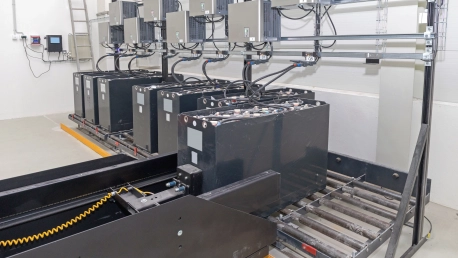The United States is actively fostering advancements in energy storage with an eye on the burgeoning renewable energy sector. By anticipating the needs of a cleaner future, the Department of Energy (DOE) is implementing rigorous strategies. These strategies emphasize the creation of a safer operational environment and a surge in domestic design innovation for large-scale battery energy storage systems (BESS). The new initiatives announced by the DOE could not be more timely, with their objectives neatly dovetailing with the industry’s expansion and its evolving challenges.
Advancing Safety in Energy Storage
Identifying the Need for Safety Training
As installations of BESS increase across the United States, the risks associated with these systems, both during normal operation and in emergency situations, are receiving heightened scrutiny. The awareness is growing that safety lapses could impede the sector’s rapid growth. Hence, there’s a pressing imperative to equip personnel like first responders and law enforcement with the requisite knowledge to handle energy storage systems safely. Recognizing this critical need, the DOE’s call for suggestions represents an essential move in developing a standardized safety training curriculum.
Formulating the ‘Blue-sky Training Program’
With the Blue-sky Training Program, the DOE aspires to establish a robust training regime that ensures stakeholders are aptly prepared to address not only the predictable but also the unforeseen ESS failures. The initiative seeks to encapsulate lessons from forward-thinking state regulations, such as California’s emphasis on emergency response plans and New York’s advancements in fire code specifications, to forge a scalable national strategy. This consolidation of best practices aims to bring all stakeholders onto the same page concerning ESS safety protocols—be it in the face of physical mishaps or cybersecurity breaches.
Addressing Manufacturing Design Challenges
Soliciting Insights on Design Hurdles
In acknowledgment of the complexities involved in the nascent stages of energy storage production, the DOE has issued a Request for Information to gather diverse perspectives on manufacturing design challenges. By inviting feedback from academia, industry figures, and research institutions, the DOE is signaling its commitment to refining the design processes of energy storage manufacturing. This initiative articulates the need for innovative solutions to enhance quality, reduce costs, and speed up production—pivotal elements that will define the sector’s competitive edge.
Fostering Domestic Manufacturing Capabilities
The pursuit of solving manufacturing design problems goes hand in hand with cultivating a robust domestic production capability. Understanding that an efficient manufacturing sector is the backbone of a sustainable energy storage market, the DOE’s focus is set on overcoming bottlenecks and fostering innovation. By unraveling and addressing the inherent design challenges, the DOE aims not only at bolstering the competitiveness of U.S. energy storage technologies but also at spearheading an increase in clean energy manufacturing jobs and invigorating the economy.
Understanding the Energy Storage Expansion
Capturing the Growth Trajectory
Projections from Wood Mackenzie paint a vivid picture of an escalating BESS market in the U.S. Set against a backdrop of nationwide clean energy targets, these projections are prompting government agencies like the DOE to prepare the ground for this expected surge in energy storage deployment. The DOE’s initiatives are fueled by the realization of the vital role energy storage systems will play and underline the urgency to scale the sector’s infrastructure commensurately with its projected growth trajectory.
Incentives Fueling Industry Growth
The U.S. is championing energy storage advances to support the growing renewable sector. The Department of Energy (DOE) is spearheading efforts by rolling out robust strategies designed to enhance safety and foster domestic innovation in large-scale battery energy storage systems (BESS). These strategies are outlined to align with the rising needs of the industry and its challenges. As the renewable energy sector expands, the timing of the DOE’s new initiatives is particularly crucial. These plans aim not only to address the current demands of energy storage but also to underpin a more sustainable future by leveraging homegrown research and development to maintain a competitive edge in the global energy market. As the DOE undertakes this strategic push, it’s an affirmation of the significant role energy storage plays in the broader transition to renewable energy.









